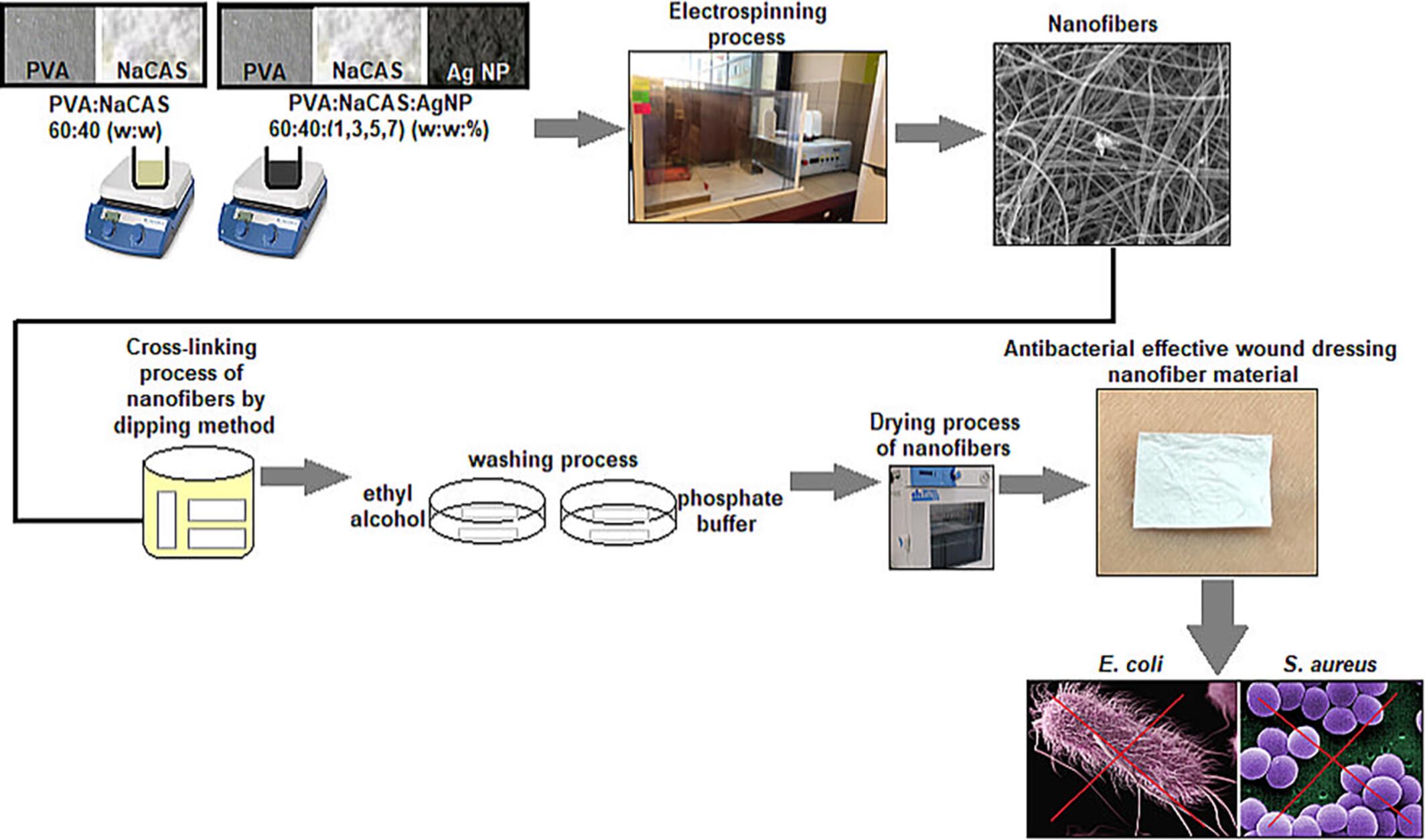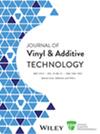Development of cross-linked polyvinyl alcohol/sodium caseinate/silver nanoparticle electrospun mats for antibacterial wound dressing
Abstract
In this study, nanofibers were produced by the electrospinning method by adding 1%, 3%, 5%, and 7% silver nanoparticles (Ag NPs) into the polyvinyl alcohol/sodium caseinate (60/40, w/w) mixture. Electrospun materials were cross-linked by immersion in a glutaraldehyde bath. Thus, antibacterial wound dressings that could be used on exuding wounds were developed. According to the scanning electron microscopy images of nanofibers, the cross-linking process by immersion method did not cause negative effects such as breakage or adhesion on the surface of fibers. The cross-linking of nanofibers was demonstrated by the presence of acetal linkages by Fourier-transform infrared spectroscopy analysis. The cross-linking process significantly improved the thermal properties of the nanofibers. The lowest crystallinity calculated in the differential scanning calorimeter was observed in the 3% Ag NP-added nanofiber with a value of 1.83%. It exhibited the lowest total soluble matter content with a value of 11.98% owing to its high cross-linking density. In addition, the 3% Ag NP-added nanofiber, which had the highest toughness and ductility, displayed the highest tensile stress with 3.5 MPa and the highest tensile strain with 7.53%. Moreover, it showed 78.11% cell viability on the L929 fibroblast cell line at the end of the 24th hour. It was indicated that although the electrospun mats maintained 100% antibacterial effectiveness, they could not be used as a wound dressing for 48 h. It was reported that only 3% Ag NP-added nanofiber could be used as a 100% effective antibacterial wound dressing for both Escherichia coli and Staphylococcus aureus provided that it was renewed every 24 h. Consequently, it was notified that cross-linking by the immersion method can be used in biomedical applications.
Highlights
- The antibacterial effects of Ag NP-doped PVA/NaCAS electrospun mats were significant.
- The cross-linking process did not induce toxic effects some of the nanofibers.
- High cross-linking density was observed in the nanofibers.
- The swelling property of nanofibers is a good feature required in an ideal wound dressing.


 求助内容:
求助内容: 应助结果提醒方式:
应助结果提醒方式:


